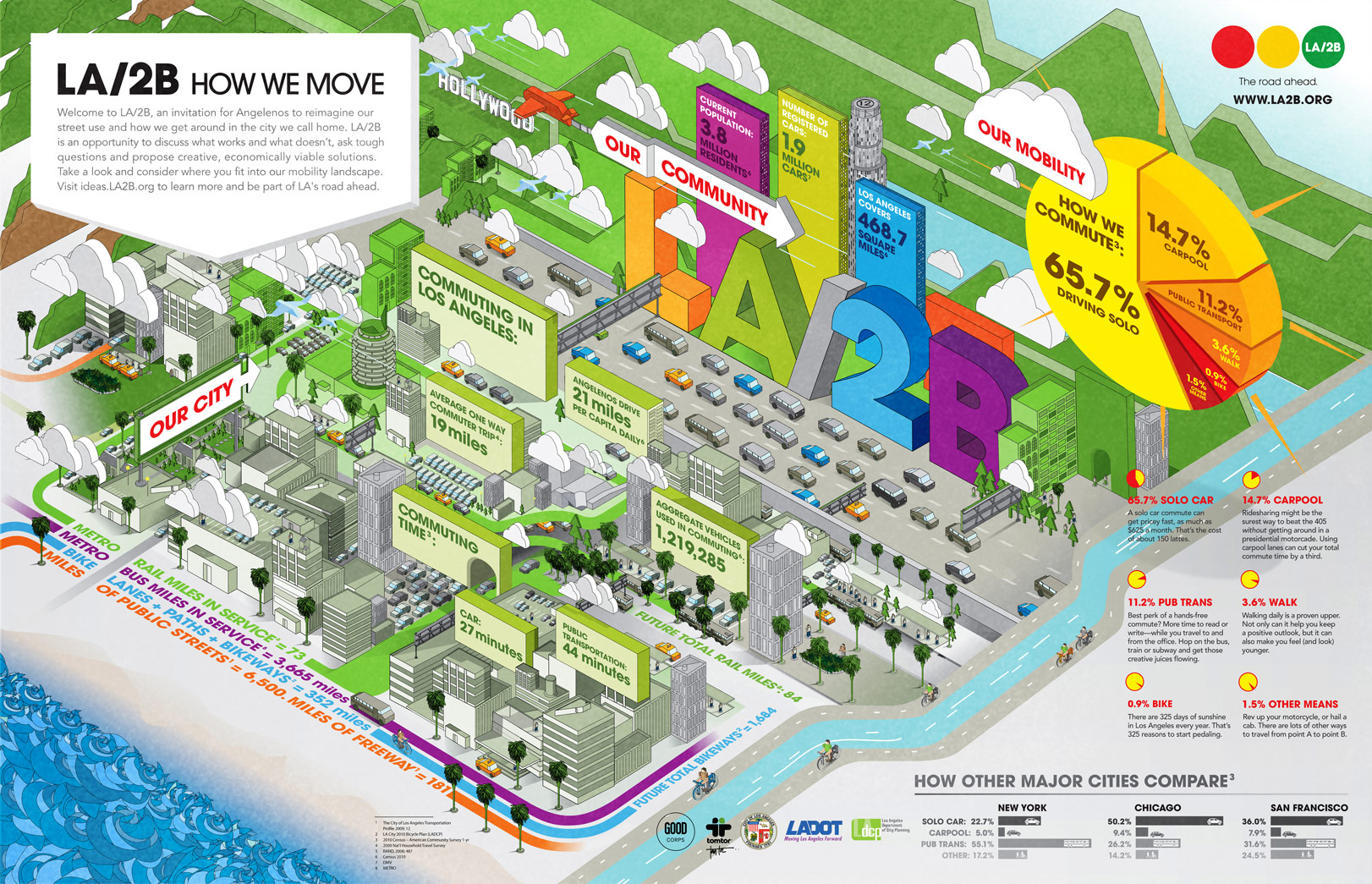(Source: Washington Post)

Today the Washington Post had an interesting article about the burgeoning bike scene in Los Angeles, California. It was a surprise to learn that there is such a good environment for biking in a city that has been known for its congested traffic and notorious drivers. Here are some extracts from Amanda Abrams’ special report to the Washington Post:
I should’ve been warned by the reaction of my sister, a 12-year L.A. resident and non-cyclist, when I told her I was planning to spend a few days riding around the city while visiting her. “No way,” she had said incredulously. “The cars here are insane. You have no idea.”
Ah, but I did have some ideas. In spite of its reputation as the country’s car mecca, I’d heard that L.A. was home to a burgeoning bike scene. And as a dedicated bicycle commuter in Washington, I figured “if they can do it, I can do it.”
Despite all the talk of L.A. being a sprawl of neighborhoods connected by freeways, and Angelenos’ perverse pride in living in a place where “no one walks,” it is, in fact, a genuine city. Close inspection of my road map showed an endless grid of quiet residential streets leading to bigger arterial roads, some of which, according to a Los Angeles Department of Transportation bike map, had bike lanes. Bingo. From there, it was no sweat to outline a variety of routes that could get me around the city without harm to life or limb.
Despite some trepidation about the first major road I encountered, safety, it turned out, wasn’t a big issue: Drivers were nowhere near as aggressive as I’d feared. And even the heat could be waited out for an hour or two.
From time to time I’d pass a cyclist and wave. Not everyone waved back, but now and then young professionals and hipsters would glide by, and we’d smile at each other like members of a select club.
It’s a club that’s quickly growing. One afternoon I stopped by the Bicycle Kitchen,, a space in eastern Hollywood run by a nonprofit educational organization where cyclists can come to work on their bikes. I wanted to hear more about what’s being described as a cycling explosion. The place was packed and humming, intent bicycle owners wheeling their vehicles in for a consultation or reaching for tools to do some tinkering themselves.
With the impatience typical of recent converts, new riders are demanding that the city improve its cycling infrastructure. But Michelle Mowery, LADOT’s bicycle coordinator, said it’s not so simple. “If we want another bike lane, we need 10 more feet of roadway,” she explained. “Something has to go: a travel lane or on-street parking.” With the vast majority of residents driving full-time, neither of those two options is going anywhere. Instead, the department has drafted a bicycling master plan, due to be released at the end of the year, laying out a network of bicycle-friendly routes on neighborhood streets.
It turns out that Los Angeles has some excellent non-street bike routes, too, such as the one I discovered that first day as an alternative to the faceless boulevards. Ballona Creek runs from central L.A. to the Pacific Ocean, and though it’s not the prettiest waterway in the world — picture a creek bed sealed in concrete — it’s paired with a dedicated bikeway that ducks under main roads. As I approached the sea, bird life along the creek picked up, with scores of gulls, pelicans and graceful white egrets socializing in the water.
Click here to read the entire article. Also don’t forget to check out Amanda’s interesting tips for biking in Los Angeles.














